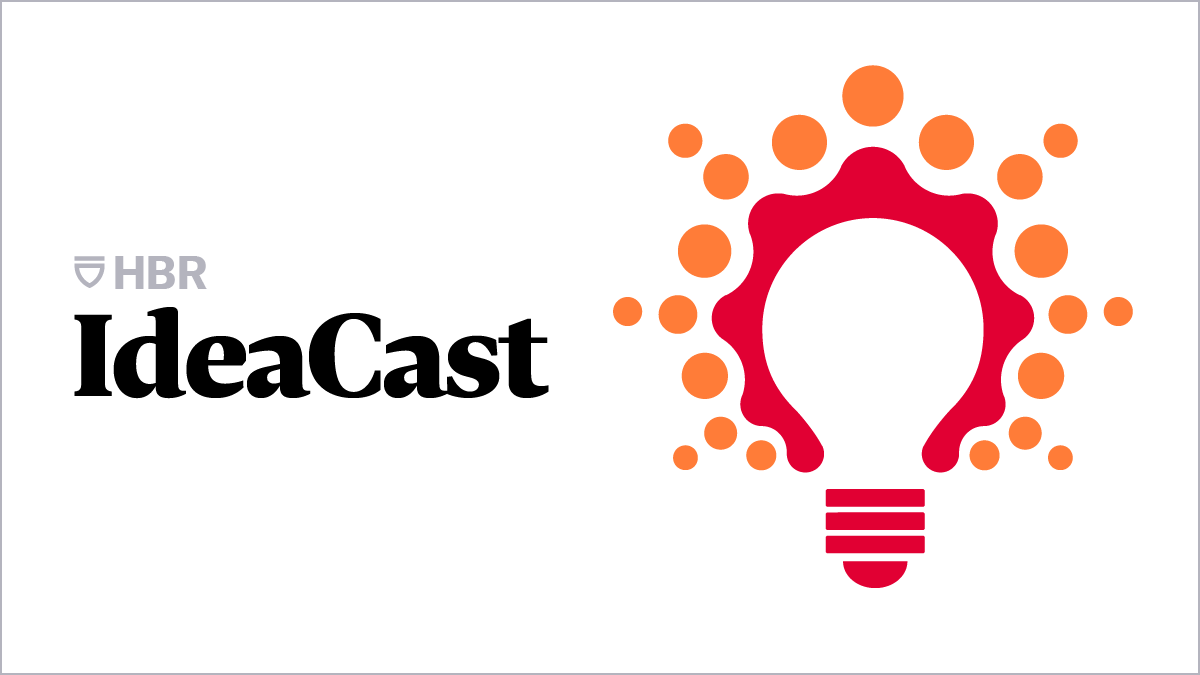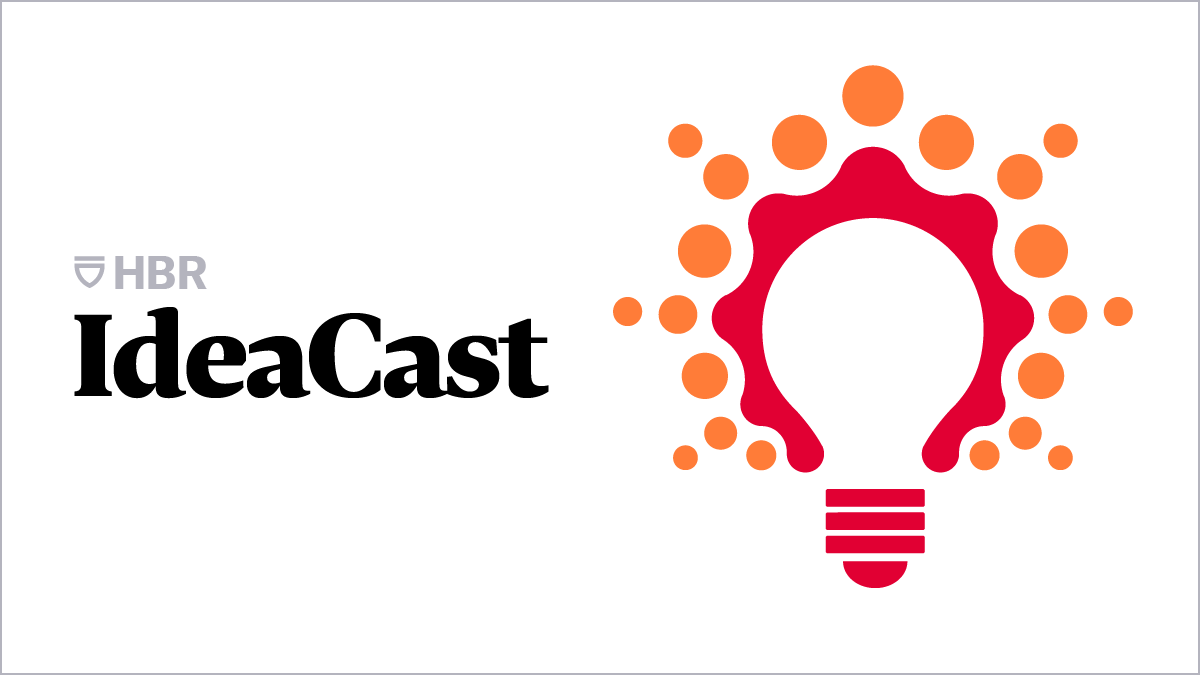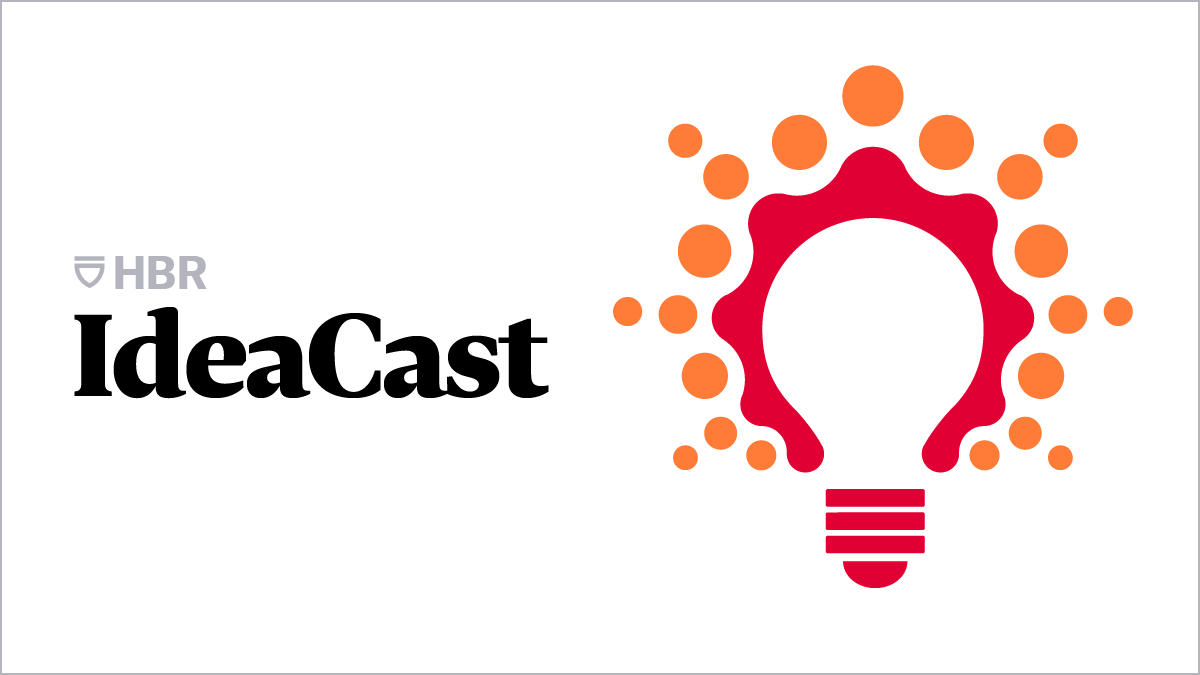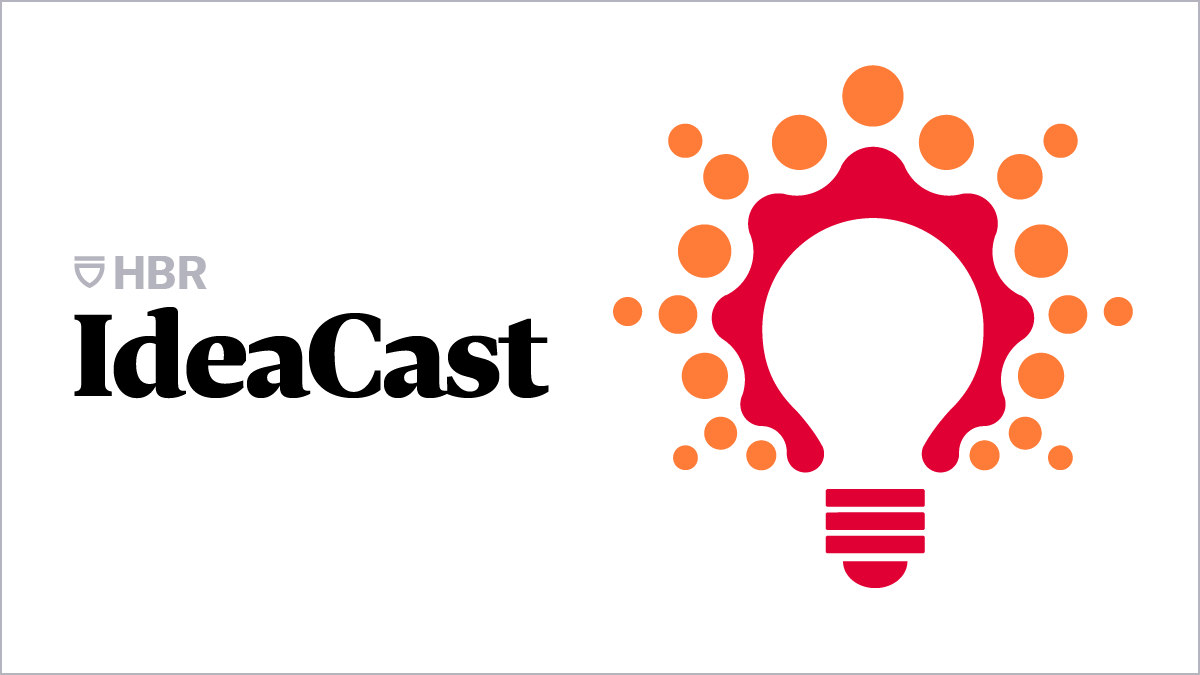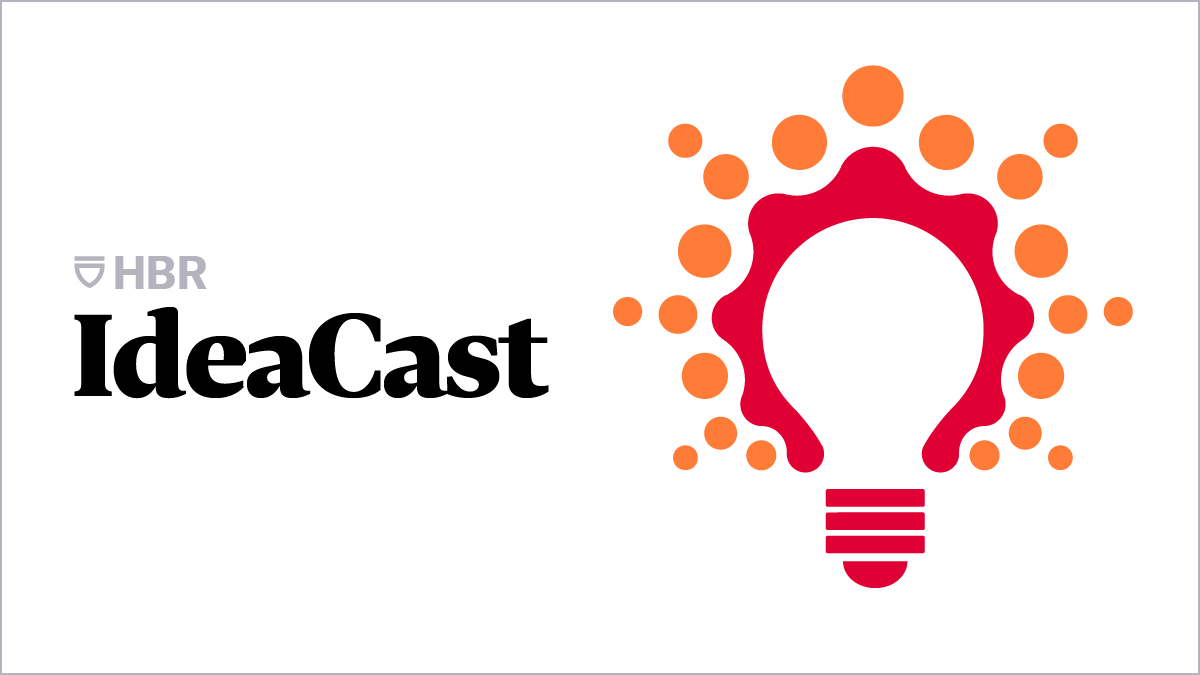Navigating High-Stakes Collaboration: Insights from an Astronaut
Former NASA Astronaut Cady Coleman Shares Insights on High-Stakes Collaboration in Space
ALISON BEARD: Welcome to the HBR IdeaCast from Harvard Business Review. I’m Alison Beard.
We all feel pressure at work. We’re all trying to execute in challenging conditions. We all need to get along with our co-workers and figure out the best way to work together as a team. But imagine doing all of that in a space station orbiting 254 miles above Earth.
Astronaut Preparations and Mission Collaborations
During her 24 years as a NASA astronaut, Cady Coleman learned a whole lot about how to perform and collaborate in high-stakes situations. She logged two space shuttle missions to conduct scientific experiments and launched the Chandra X-ray Observatory Telescope. And her last mission involved working within a multicultural crew of six aboard the International Space Station for more than five months.
Lessons for Earth-Based Work Environments
She’s here today to talk to us about how you prepare for that kind of job and do it well once you’re up there. And tell us how we can translate those lessons into more regular work back here on earth. Her new book is called Sharing Space, an Astronaut’s Guide to Mission, Wonder and Making Change. Cady, so great to have you here.
CADY COLEMAN: I’m so happy to be here.
Developing an Operational Mindset for Success
ALISON BEARD: Okay, so let’s first talk about your decision to become an astronaut. You studied chemistry at MIT and then polymer science and engineering at UMass. Why did you want to get out of a normal lab and go to space? Were you drawn to those higher stakes that I was just talking about?
CADY COLEMAN: I don’t know if it’s necessarily higher stakes, but this curiosity in a direction of just what else is out there and could I be one of the people that helped us discover it? And also, I had a mom that taught me I could be literally anything that I wanted to be. And I don’t know how you do that, I work at it. But it really made me think when I met Sally Ride at MIT and it had never occurred to me, I was a junior so I was probably 20.
Training, Preparation, and Effective Execution
ALISON BEARD: But to be an astronaut, it also takes being calm and collected in high-pressure situations. So have you always been able to do that or is it something that you had to learn?
CADY COLEMAN: I would say a little of both, in that I’ve always been somebody who’s good at seeing the big picture, and that takes taking a step back and a deep breath to do often.
Building Strong Collaborative Teams in Space
ALISON BEARD: Also, because there must be competition among the astronauts to prove that they should be the one on the next ship. So you don’t want to be the one making mistakes, how do you handle that?
CADY COLEMAN: Everybody’s got their own way, my way is probably to be a little bit oblivious to the competition and really just being myself.
Shared Mission Mindset for Motivation and Readiness
ALISON BEARD: With so much of the work of NASA being done on the ground, how do you stay motivated and ready while waiting for a mission?
CADY COLEMAN: It’s really the word that you used, Alison, and it’s the word mission, where there’s individual shuttle missions, there’s going to the space station, those missions, and there’s future missions. But they’re all part of one really big and very clear mission, which is about space exploration.
Adapting to Diverse Crews and Collaborative Challenges
ALISON BEARD: So then ultimately the mission teams are put together by NASA. What’s the first step that you take to start figuring out how you’re going to collaborate?
CADY COLEMAN: The first step is getting to know each other.
Navigating Challenges and Innovations in Space Travel
ALISON BEARD: I’d love to hear your view on the future of space travel, particularly with the involvement of private companies like SpaceX, Blue Origin, and others.
CADY COLEMAN: I love having all these companies involved. I know people worry at sort of an initial front that if something’s commercial, if money’s at stake, then human life will be valued less.
Preserving Hope and Unity in the Face of Space Disasters
ALISON BEARD: You were at NASA when the Columbia space shuttle blew up on reentry, which killed seven of your colleagues. How did that change how you thought about the stakes of your work or about how the organization operated to avoid disasters like that?
CADY COLEMAN: I would say that even before that, all of us understand and our families do too, that flying in space is never going to be safe. It’s going to be as safe as we can make it.
When is the Right Time for Companies to Take a Stand on Controversial Issues?
Navigating the Complexities of Corporate Advocacy in Today’s World
—
– Workers Expect Organizations to Take a Stand on Social and Political Issues
—
– The Rise of Corporate Advocacy in a Time of Social Outrage: Insights from Allison Taylor
How Companies Can Succeed by Decreasing Workload
The Dangers of Workaholism: A Deep Dive into Overwork Culture
Understanding the Impact on Individuals, Teams, and Organizations
Insights from Researcher Malissa Clark on Overwork Culture and How to Overcome It
Is Talent Density the Answer to a Challenging Job Market or Just a Passing Fad?
Netflix’s Journey to Talent Density
In 2001, Netflix faced a crisis when it had to let go of a third of its employees to survive the aftermath of the dot-com bubble burst.
The Power of Talent Density
Turned out, letting go of low performers led to a transformative work environment at Netflix, emphasizing the importance of talent density.
Exploring Talent Density Today
Following the release of No Rules Rules: Netflix and the Culture of Reinvention, talent density has become a hot topic in talent acquisition, impacting workforce performance.
Understanding Talent Density and its Impact
Learn about talent density, the percentage of high-performing employees within a workforce, and why it’s crucial for companies in today’s competitive landscape.
Calculating Talent Density and Identifying Top Performers
Discover how to calculate talent density and define top performers within an organization, essential for optimizing team performance.
Challenges of Building a Team of A-Players
While hiring top talent is ideal, achieving talent density can be challenging, requiring careful consideration of team dynamics and diversity.
Creating Talent Density with Existing Teams
Investing in learning and development can help organizations nurture top performers and achieve talent density through internal growth opportunities.
The Importance of Diversity in Team Dynamics
While top performers are essential, a diverse team with a range of skills and perspectives is key to long-term success, emphasizing the value of teamwork.
Common Mistakes Marketers Make: The Pitfalls of Trying to Persuade Others
Cutting-edge Marketing Insights with Leslie Zane
CURT NICKISCH: Welcome to the HBR IdeaCast from Harvard Business Review. I’m Curt Nickisch.
Revolutionizing Marketing Strategies
Elias St. Elmo Lewis is the 19th century advertising pioneer who came up with the marketing and sales funnel. That’s the idea that to earn a loyal customer, you have to take people through a series of stages.
The Power of Instinct in Marketing
She says, “People are actually pretty obstinate and persuadable.” She says, “The right way to think about marketing is that it lives and dies by instinct.” Here to explain how to market better, whether it’s a century old brand, a brand new product, or your own personal brand is Leslie Zane.
Overcoming Traditional Marketing Practices
Traditional marketing is built on the premise that the conscious brain makes its decisions, and we need to muster a whole bunch of arguments in order to convince the conscious mind to do what we want it to do.
Tapping Into Consumer Instincts
What we now understand is that the way brands exist in the mind is a much more organic structure than we thought before. Brands actually have physicality. They are a series of cumulative memories that get glued to a brand over time, and that is what exists in the subconscious mind, in the instinctive mind.
Practical Strategies for Brands of All Sizes
Yeah, this approach works for anything and everything. And if you’re a small brand, you need to gain an instinctive advantage the most because you don’t have the same kind of resources that the large legacy brands have.
Personal Branding in the Modern Era
Listen, everyone is a brand, and by the way, we’re all marketers. We’re all trying to sell something, including ourselves.
Thanks to our team, senior producer Mary Dooe, associate producer Hannah Bates, audio product manager Ian Fox and senior production specialist Rob Eckhardt. Thank you for listening to the HBR IdeaCast. We’ll be back with a new episode on Tuesday. I’m Curt Nickisch.
Is Trying to Please Others Holding You Back?
Are You a People Pleaser? How It Impacts Your Career and How to Break Free
An Overview of People Pleasing Behavior
ALISON BEARD: Welcome to the HBR IdeaCast from Harvard Business Review. I’m Alison Beard.
Recognizing People Pleasing in the Workplace
ALISON BEARD: I’d love to start with your definition of people pleaser. What does it mean to you?
HAILEY MAGEE: So in the book, I define people pleasing as the act of putting others’ needs, feelings, wants and dreams first at the expense of your own needs, feelings, wants and dreams. So it’s not just being kind and generous, but it’s sacrificing yourself in the process of doing so.
Consequences of People Pleasing and How to Navigate Away from It
ALISON BEARD: And do most people pleasers realize that they’re doing it or do they need help recognizing that this description fits them?
Setting Boundaries in the Workplace as a People Pleaser
ALISON BEARD: How does controlling what I can control translate into other people changing their behavior so that they’re not making demands of me that will tempt me back into people pleasing?
Practical Solutions for Breaking the People Pleasing Pattern
ALISON BEARD: Let’s move to solutions. You argue that people can break themselves of this habit. Where do they start?
Impact of Overcoming People Pleasing in Professional and Personal Life
HAILEY MAGEE: Yeah, for most of my clients, what I do actually end up seeing is that the efforts we make to break people pleasing patterns in our relationships with friends and family and at home do often translate into the workplace. Because what’s happening here is there’s this fundamental restructuring of how we exist in the world.
Advice for Bosses and Colleagues of People Pleasers
ALISON BEARD: So what’s your advice to a boss who maybe suspects that some of the people on their team are people pleasers and might benefit from it, might not know how to change it? What’s the case for them to reach out and how might they help the person shift?
Starting Early: Tips for New Hires in Setting Boundaries
ALISON BEARD: What advice do you have for people just starting their career or just starting over in a new job? How do you make the right impression as someone who’s easy to work with and will be a great colleague, but also won’t be walked all over?
Gaining Self-Trust by Overcoming People Pleasing
HAILEY MAGEE: And now having done a lot of this work, I’m not fully healed. There are definitely still areas where this comes up for me but fundamentally, I trust that when I have a strong need or when a situation feels untenable or unsupportive or unhealthy, I know that in that moment, even though I might be nervous or afraid or self-doubting, I will find a way to speak up and make sure I’m standing up for myself and having my own back in those moments.
The Advantages of Internal Mobility for Employers
The Benefits of Internal Mobility in Your Organization
Read on for a closer look at upsides of internal mobility, along with practical tips to improve internal hiring within your own organization.
Nearly twice as many leadership promotions
While internal mobility can include lateral job moves, it’s also highly correlated with promotions into leadership.
Compared to those on the low end of the spectrum, companies with highest internal mobility rates saw 79% more leadership promotions on a per-employee basis. Consider it a virtuous cycle: When landing a new job internally is normalized, it’s easier to find and develop new leaders.
Investing in internal mobility programs can help you build a healthy pipeline of leaders equipped with invaluable institutional knowledge — unlike the external candidates you’d otherwise have to hire.
Over 50% longer employee tenures
Previous LinkedIn data highlighted that employees who make internal moves are 40% more likely to stay at the company for at least three years (retention).
Today’s recent findings add another layer, showing that at companies with high internal mobility, employees tend to have 53% longer tenures overall compared with those at companies with low internal mobility. That means that fostering internal opportunities may not only boost short-term retention, but also contributes to longer overall tenure. Employees are more inclined to stay within an organization where they see pathways for growth and new roles, extending their career lifespan and deepening their loyalty.
If a skilled worker knows they can step into a new role without stepping out of your organization, they’re way more likely to stick around.
Greater focus on upskilling
“Businesses need new skills at a rate faster than I’ve ever seen before,” said Jennifer Shappley, LinkedIn’s VP of talent, in the most recent Global Talent Trends report. “[That] means they need to help their employees evolve via upskilling and internal mobility.”
Today’s data confirms that the two go hand-in-hand: Organizations with high internal mobility saw 17% greater learner engagement, measured as the average number of hours spent developing skills on LinkedIn Learning.
Upskilling will be an increasingly vital tool, especially for companies that find they can’t hire external candidates with the right skills — whether there aren’t enough candidates or their asking price is too high.
“In years past, companies might have relied more on talent acquisition to ‘buy’ the new skills they needed,” Jennifer said, “but that strategy no longer works in isolation for today’s labor market and business environment.”
Final thoughts
So, now you know that internal mobility is linked to all sorts of strong benefits — but what can you actually do to improve it at your company?
A comprehensive transformation like Schneider’s typically has to be led from the top, as managers fearful of losing their talent will often resist or discourage internal mobility. Learn more about how companies like Comcast, Amazon, and Pfizer achieved similar transformations with intentional policies and programs.
That advice might work well for talent leaders with the influence to instill such policies and programs — but what if you’re just a single recruiter without the power to introduce sweeping operational changes?
You can still make a meaningful impact. Only 38% of recruiters even search for internal candidates on LinkedIn; that simple tactic can make you stand out, surfacing existing employees that others might overlook.
Whether your role is big or small, you can move the needle to make it easier for employees to land a new role — without having to leave your company.
Methodology
We categorized companies into deciles based on their internal mobility rates and compared outcomes for companies in the 10th decile (highest internal mobility) vs. the 1st decile (lowest internal mobility).
Internal mobility: All data reflects aggregated LinkedIn member activity as of April 2024. We’ve defined internal mobility as any point at which an employee took a new position at the same company in the last 12 months ending April 2024. To calculate internal mobility rates, we included only companies with at least 100 transitions and calculated the median rate.
We considered the median tenure (in years) by company for all current employees. Number of manager or higher promotions divided by the total average headcount at that company in the last 12 months. We factored out companies with fewer than five total promotions. We calculated median hours per learner of LinkedIn Learning content watched by enterprise users at each company in the last 12 months. To mitigate outlier companies with few learners and high learning hours (and therefore disproportionately high hours per learner), we filtered for at least 25 learners in the company.





